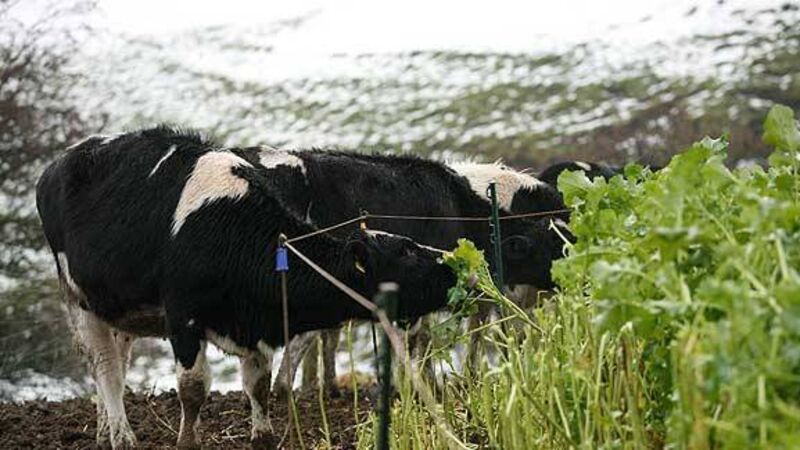Scan cows now to plan your winter calving better

This can be achieved by pregnancy scanning the herd. Scanning removes the uncertainty of calving dates next spring.
Scanning should only be carried out 35 days after the end of the breeding season.
If cows are not scanned until they are after 10 weeks in calf, the scanner will have more difficulty in identifying cows carrying twins, or predicting the exact stage of pregnancy.
It will tell you what is and what is not in calf, allowing you the opportunity to take out empty cows, wean their calves earlier, and have these barren cows finished with some supplementation off grass. Finishing these barren cows (along with other cull cows/heifers) will save you fodder, money, time and shed space.
Most scanners can give you a good estimate of the number of weeks that each cow has gone in calf. This information can be used to predict the cow’s or heifer’s due date, which will influence how she is managed, fed, vaccination time etc. It will allow you to predict the peak calving period, so that extra help can be planned, or when you may need to take time off work.
Scanning information can be inputted into ICBF, which will then produce a very useful calving report showing all future calving dates. This can be printed and put up in the calving area.
In the run-up to calving, pregnant cows can be drawn out and penned according to their predicted calving date. As calving approaches, these cows can be moved into pens or loose housing closest to the calving boxes/area.
Scanning allows you to identify late calvers, batch them together, and feed them accordingly. These predicted late calvers could be selected for culling next year when their calves have been weaned. There is also the option of culling these predicted late calvers now, and selling them at the mart.
Scanning will have you primed for what to expect at calving. It will sometimes show up cows that may be carrying an unviable embryo that, for some reason, is unlikely to go full term.
If the scanning reveals that more than 5% of your cows are empty, this may signify that there is a fertility problem in your herd. Maybe it was an infertile bull issue or perhaps a mineral deficiency or a disease problem. Either way, it should prompt you to investigate the issue further.
Some scanners can provide information on the sex of the calf; this can make you aware of potential problems with individual cows that are carrying bull calves.
Scanning will identify any cows carrying twins, and this will influence how they are managed over the dry period.
The cost of scanning is generally less for larger herds (20 or more cows), where cows are all scanned together in the one location.
In summary, pregnancy scanning will tell you what is and what is not in calf, allowing you to cull barren cows.
It provides information on herd fertility, on what to expect and when to expect it, thus helping in the management and organisation of calving and labour requirements.


